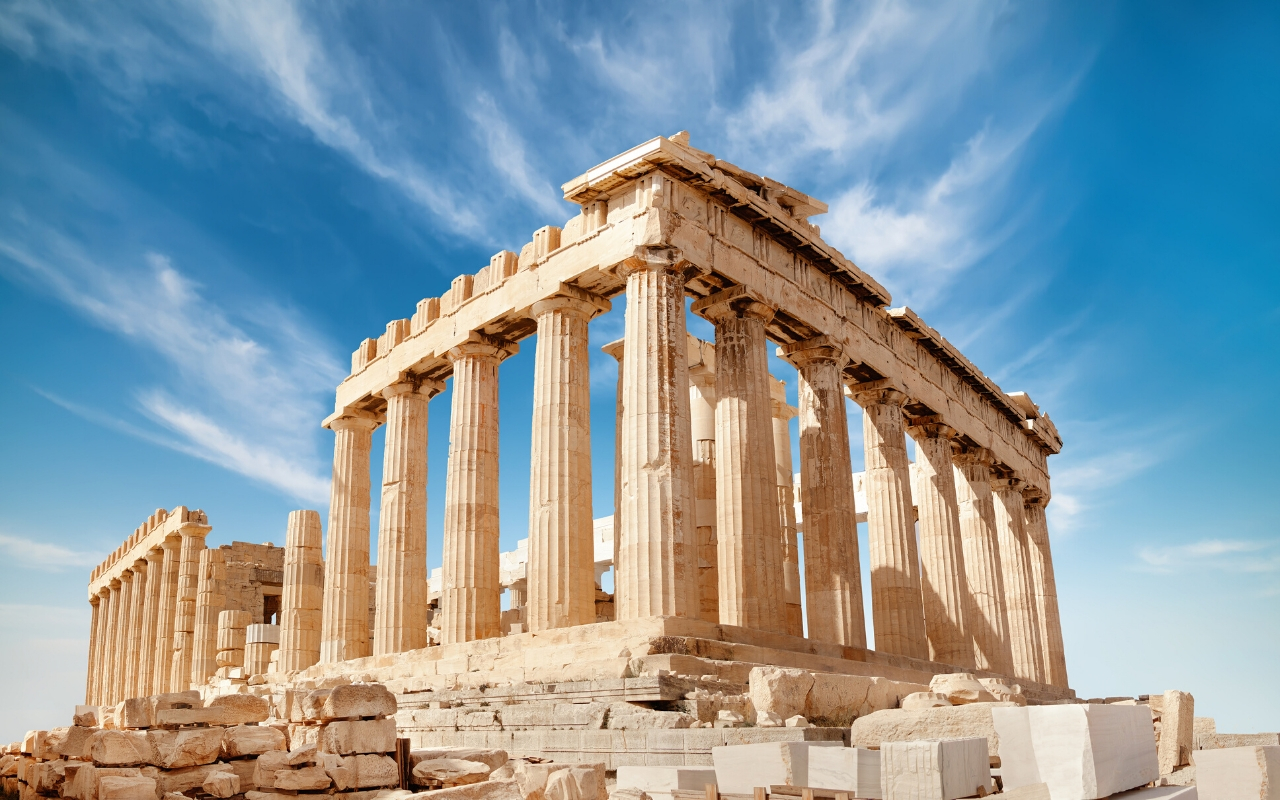
The Acropolis of Athens, a UNESCO World Heritage site and an enduring symbol of Western civilization, stands as a testament to the ingenuity, artistry, and spiritual devotion of ancient Greece. Perched majestically atop a rocky outcrop overlooking the bustling modern city, this sacred citadel has witnessed millennia of history, from its origins as a Mycenaean fortress to its zenith as the religious heart of classical Athens. Visiting the Acropolis is not merely a sightseeing excursion; it’s a journey through time, a chance to walk in the footsteps of philosophers, artists, and gods.
This comprehensive guide will equip you with everything you need to know to plan an unforgettable visit to this iconic landmark, from its rich history and must-see attractions to practical travel tips, the best times to visit, accommodation options, culinary delights, and seamless transportation.
A Glimpse into the Glorious Past: The History of the Acropolis
Related Articles about Ascending to the Gods: Your Essential Guide to Visiting the Acropolis of Athens:
- Bali: A Journey Through Paradise and Its Top Hotels
- Geneva: A Traveler’s Guide to the City of Peace and Precision
- Bali: A Traveler’s Guide to the Island of Gods
- Diving Deep into the Blue: Your Ultimate Guide to the Blue Lagoon Iceland
- Qatar: A Jewel of the Arabian Peninsula – Your Comprehensive Travel Guide
The story of the Acropolis is intrinsically woven into the fabric of Athenian history. Its strategic elevated position made it an ideal defensive stronghold, with evidence of habitation dating back to the Neolithic period. During the Mycenaean era (around 1300-1200 BC), a fortified palace complex, known as the "City of Erechtheus," occupied the summit.
The true golden age of the Acropolis arrived in the 5th century BC, during the reign of Pericles. Following the devastating Persian Wars, Athens embarked on an ambitious rebuilding program, transforming the war-torn site into a breathtaking sanctuary dedicated to the city’s patron goddess, Athena. This era saw the construction of the magnificent temples that have captivated imaginations for centuries. The Parthenon, a Doric masterpiece dedicated to Athena Parthenos, was the crowning achievement, symbolizing Athenian power and democracy. The Erechtheion, with its iconic Caryatids, showcased a more delicate Ionic style. The Propylaea, a monumental gateway, and the Temple of Athena Nike, a small but elegant temple celebrating victory, completed this unparalleled architectural ensemble.
Over the centuries, the Acropolis endured invasions, occupations, and even conversion into a Christian church and later a mosque. Despite the ravages of time and human intervention, the enduring spirit of its magnificent structures continues to inspire awe. The ongoing restoration efforts, a meticulous and complex undertaking, ensure that this ancient wonder remains accessible and preserved for future generations.
Unveiling the Treasures: Main Attractions of the Acropolis
As you ascend the sacred hill, prepare to be mesmerized by the architectural marvels that await:
-
The Parthenon: The undisputed centerpiece of the Acropolis, the Parthenon is an iconic Doric temple dedicated to Athena Parthenos. Its harmonious proportions, intricate sculptural details (though much of the original frieze and metopes are now in museums), and sheer grandeur are breathtaking. Imagine the vibrant colors that once adorned its surfaces and the imposing statue of Athena within. Even in its current state, its majestic presence is undeniable.
-
The Propylaea: This monumental gateway served as the grand entrance to the Acropolis. Designed by Mnesicles, it is a complex structure featuring a central hall flanked by two colonnades and two smaller temples. The Propylaea’s design aimed to impress visitors and symbolically separate the sacred precinct from the profane world.
-
The Erechtheion: A masterpiece of Ionic architecture, the Erechtheion is renowned for its unique asymmetrical design and its most famous feature: the Porch of the Caryatids. These six graceful female figures, serving as columns, are captivating in their artistry and pose. The Erechtheion housed several ancient cults and sanctuaries, including those dedicated to Athena Polias and Poseidon Erechtheus.
-
The Temple of Athena Nike: Perched on a bastion overlooking the approach to the Acropolis, this small but exquisite Ionic temple is dedicated to Athena, the goddess of victory. Its delicate design and commanding position make it a focal point of the complex, symbolizing Athens’ triumphs.
-
The Theatre of Dionysus: Located on the southern slope of the Acropolis, this ancient theatre is believed to be the birthplace of Western drama. It could seat up to 17,000 spectators and hosted the famous plays of Aeschylus, Sophocles, Euripides, and Aristophanes. Standing here, you can almost hear the echoes of ancient performances and the roar of the crowd.
-
The Odeon of Herodes Atticus: Situated adjacent to the Theatre of Dionysus, this magnificent semi-circular Roman theatre, built in 161 AD, is still used today for performances and concerts during the summer months. Its well-preserved structure offers a glimpse into Roman entertainment and architectural prowess.
-
The Acropolis Museum: While not directly on the Acropolis itself, this modern, state-of-the-art museum is an essential part of your visit. Located at the foot of the hill, it houses an astounding collection of original artifacts found on the Acropolis, including the Parthenon Marbles (some of which were repatriated from the British Museum). The museum’s design seamlessly integrates with its surroundings, offering stunning views of the Acropolis itself.
Navigating Your Journey: Essential Travel Tips
To make your visit to the Acropolis as smooth and enjoyable as possible, consider these practical tips:
-
Book Tickets in Advance: The Acropolis is incredibly popular, and queues can be substantial, especially during peak season. Purchasing your tickets online in advance is highly recommended to save time and guarantee entry. Many online ticket vendors offer combined tickets that include other archaeological sites in Athens.
-
Choose Your Timing Wisely: The Acropolis opens early and closes late. The best times to visit are early in the morning (shortly after opening) or late in the afternoon, about two hours before closing. This allows you to avoid the midday sun and the largest crowds.
-
Dress Appropriately: Wear comfortable walking shoes as the terrain can be uneven and steep. The Acropolis is exposed to the sun, so a hat, sunscreen, and sunglasses are essential. Bring a reusable water bottle; there are water fountains available.
-
Stay Hydrated: Especially during warmer months, it’s crucial to drink plenty of water.
-
Take Your Time: Don’t rush your visit. Allow at least 2-3 hours to fully explore the Acropolis and its surrounding areas. Take moments to sit, absorb the atmosphere, and imagine the lives of those who walked these grounds millennia ago.
-
Consider a Guided Tour: For a deeper understanding of the history, mythology, and architecture, consider joining a guided tour. Licensed guides can provide invaluable insights and bring the ancient stones to life. Many tours also offer skip-the-line access.
-
Accessibility: The Acropolis has undergone significant improvements for accessibility. There is an elevator that can take visitors to the summit, and accessible pathways are available in many areas. However, some parts of the site may still present challenges for those with mobility issues.
-
Photography: You are welcome to take photos, but be mindful of other visitors and avoid using flash photography inside the Acropolis Museum.
The Sweet Spot: Best Time to Visit the Acropolis
The "best" time to visit the Acropolis often depends on your priorities:
-
Spring (April-May) and Autumn (September-October): These are generally considered the ideal seasons. The weather is pleasant, with average temperatures ranging from 15-25°C (59-77°F). The crowds are still significant but more manageable than in the summer. The blooming wildflowers in spring and the warm, golden light of autumn enhance the beauty of the site.
-
Summer (June-August): This is the peak tourist season. Expect high temperatures (often exceeding 30°C/86°F), large crowds, and higher prices for accommodation and flights. If you visit in summer, prioritize early morning or late afternoon visits, stay hydrated, and seek shade whenever possible.
-
Winter (November-March): While cooler (average temperatures around 10-15°C/50-59°F), winter offers a more tranquil experience with fewer crowds. The light can be softer, and the atmosphere more contemplative. However, some facilities might have reduced operating hours.
Resting Among the Ancients: Nearby Hotels
The Plaka and Monastiraki neighborhoods, located at the foot of the Acropolis, offer a wide range of accommodation options to suit every budget and preference:
-
Luxury:
- Hotel Grande Bretagne, a Luxury Collection Hotel, Athens: A historic landmark hotel offering unparalleled views and opulent amenities.
- King George, a Luxury Collection Hotel, Athens: Adjacent to Hotel Grande Bretagne, it boasts classic elegance and a prime location.
- Electra Metropolis: A modern luxury hotel with a rooftop pool and spectacular Acropolis views.
-
Mid-Range:
- New Hotel: A stylish and contemporary hotel with a central location and excellent service.
- The Stanley: Offers comfortable rooms and a rooftop pool with panoramic city views.
- Acropolis Select Hotel: A well-appointed hotel with friendly staff and a convenient location.
-
Budget-Friendly:
- Bed & Breakfasts and Guesthouses in Plaka: Explore the charming alleys of Plaka for cozy and affordable guesthouses.
- Hostels: Several well-rated hostels in the city center offer dormitories and private rooms at budget-friendly prices.
A Taste of Athens: Local Food to Savor
After a day of exploring, indulge in the vibrant culinary scene of Athens. The flavors of Greece are a delightful complement to the ancient wonders:
- Moussaka: A classic layered dish of eggplant, minced meat, béchamel sauce, and potatoes.
- Souvlaki: Skewered and grilled pieces of meat (lamb, pork, or chicken) often served in pita bread with tzatziki.
- Gyros: Thinly sliced meat cooked on a vertical rotisserie, served in pita bread with various toppings.
- Tzatziki: A refreshing yogurt-based dip with cucumber, garlic, and dill.
- Greek Salad (Horiatiki): A simple yet delicious salad of tomatoes, cucumbers, onions, feta cheese, olives, and olive oil.
- Spanakopita: Flaky pastry filled with spinach and feta cheese.
- Kalamari & Octopus: Freshly grilled or fried seafood is a must-try.
- Loukoumades: Small, deep-fried dough balls drizzled with honey and cinnamon.
- Greek Coffee: Strong and aromatic, often served with a glass of water.
Where to Eat: Explore the tavernas and restaurants in the Plaka, Monastiraki, and Psirri neighborhoods for authentic Greek cuisine. Don’t be afraid to venture off the main tourist paths to discover hidden gems.
Getting Around: Transportation Options
Athens offers a comprehensive and efficient public transportation system, making it easy to reach the Acropolis and explore the city:
-
Metro: The Athens Metro is modern, clean, and efficient. The Acropoli station (Line 2 – Red Line) is located just a short walk from the Acropolis entrance. This is arguably the most convenient way to reach the site.
-
Buses and Trolleybuses: An extensive network of buses and trolleybuses covers the city. However, navigating the routes can be more complex for tourists compared to the metro.
-
Taxis: Taxis are readily available throughout the city. Ensure the meter is used, and confirm the destination with the driver. Ride-sharing apps are also an option.
-
Walking: The historical center of Athens, including Plaka, Monastiraki, and the Acropolis, is best explored on foot. Many attractions are within walking distance of each other.
-
Airport Transfer: The Athens International Airport (ATH) is well-connected to the city center. You can reach the Acropolis area via the Metro (Line 3 – Blue Line to Syntagma, then transfer to Line 2), airport buses, or taxis.
An Enduring Legacy
A visit to the Acropolis of Athens is an experience that transcends mere tourism. It is an immersion into the foundations of Western thought, art, and democracy. As you stand on this ancient citadel, surrounded by structures that have weathered empires and witnessed the rise and fall of civilizations, you can’t help but feel a profound connection to the past and a renewed appreciation for the enduring power of human creativity and spirit. Plan your visit with care, embrace the journey, and prepare to be utterly captivated by the timeless majesty of the Acropolis.






